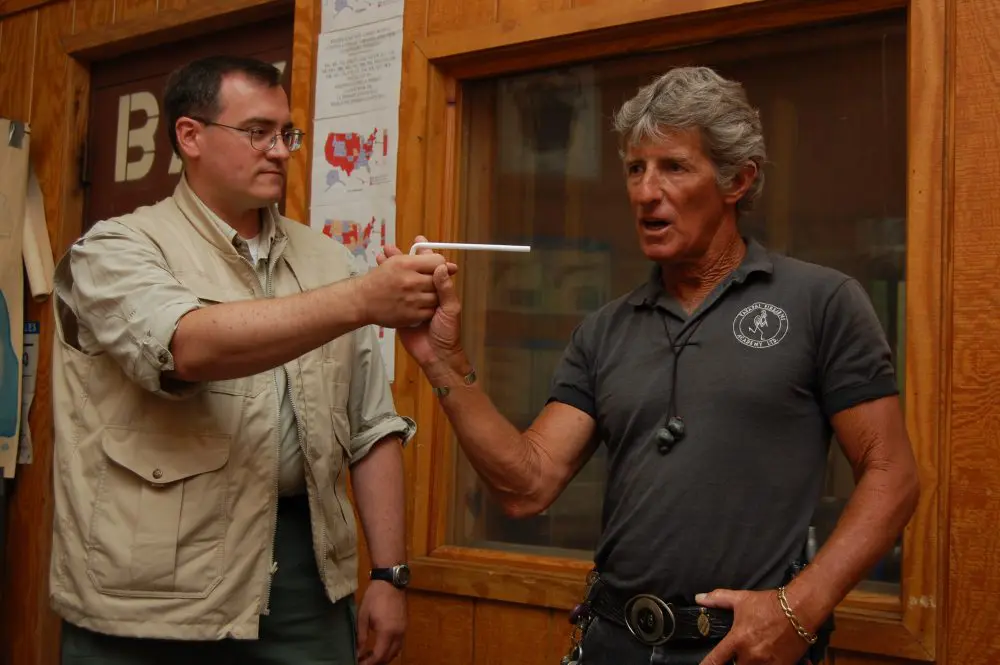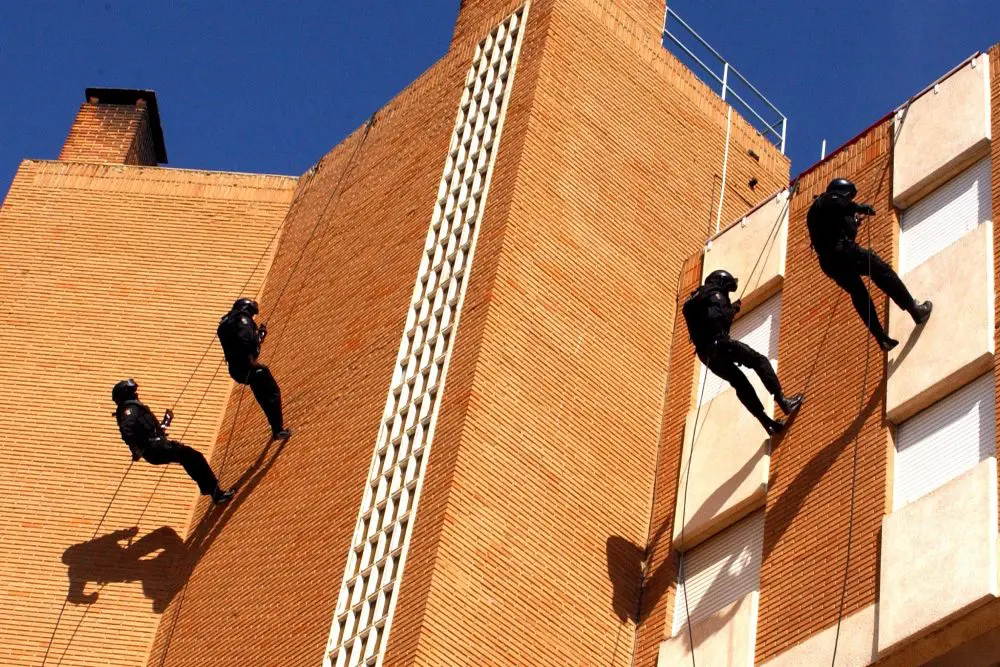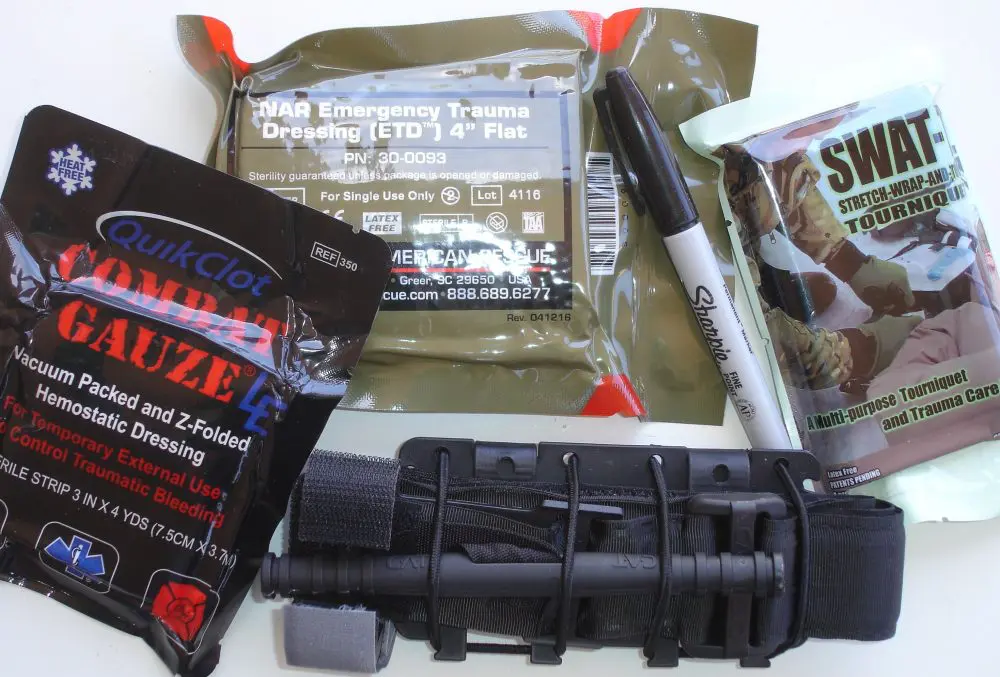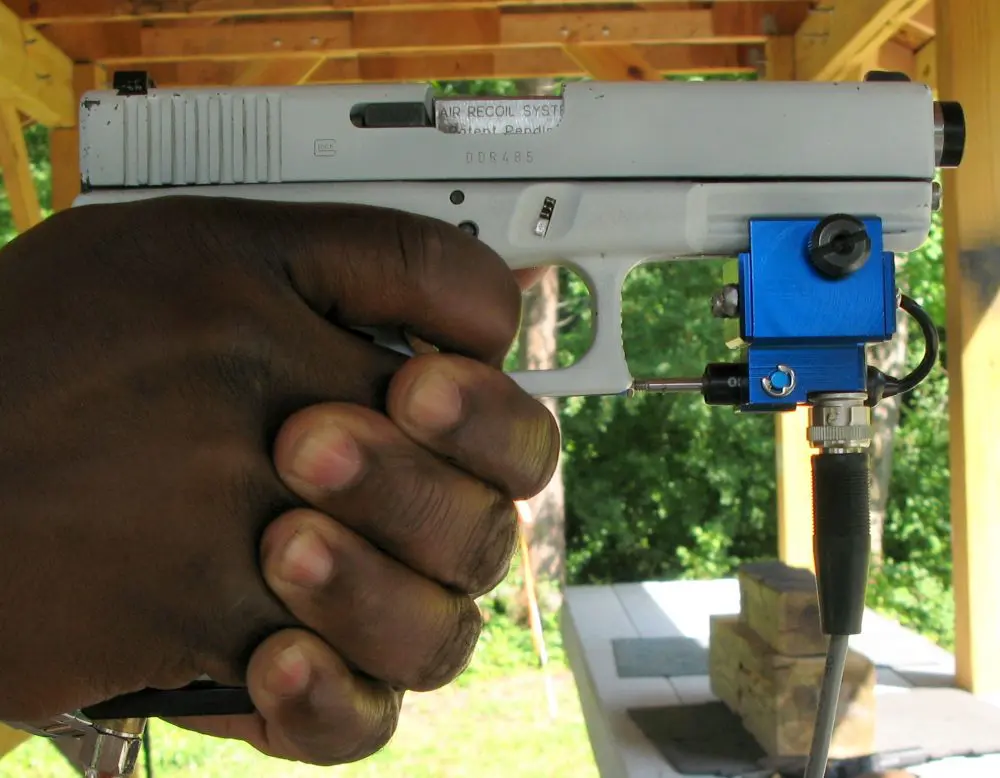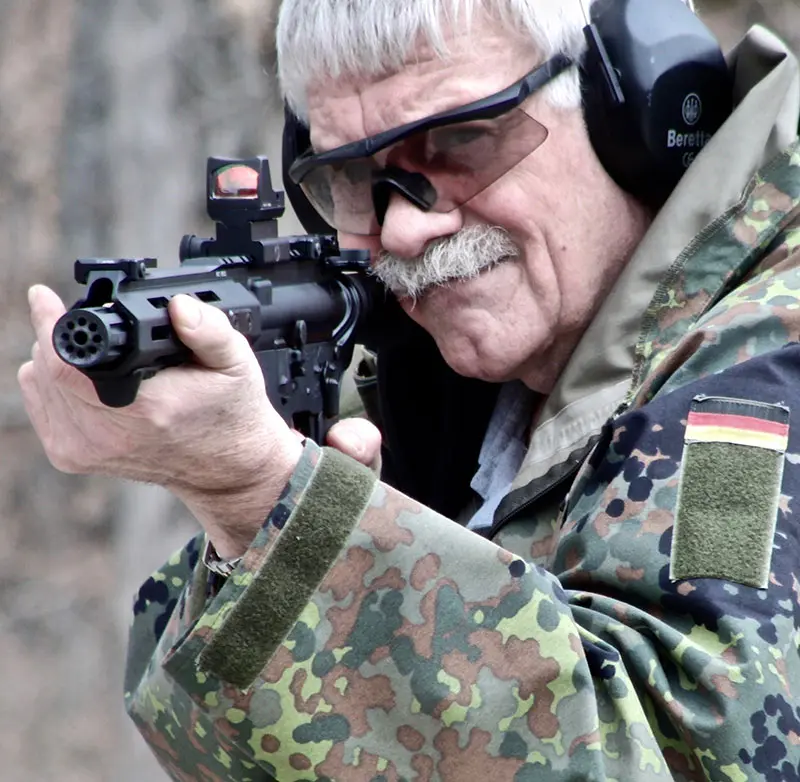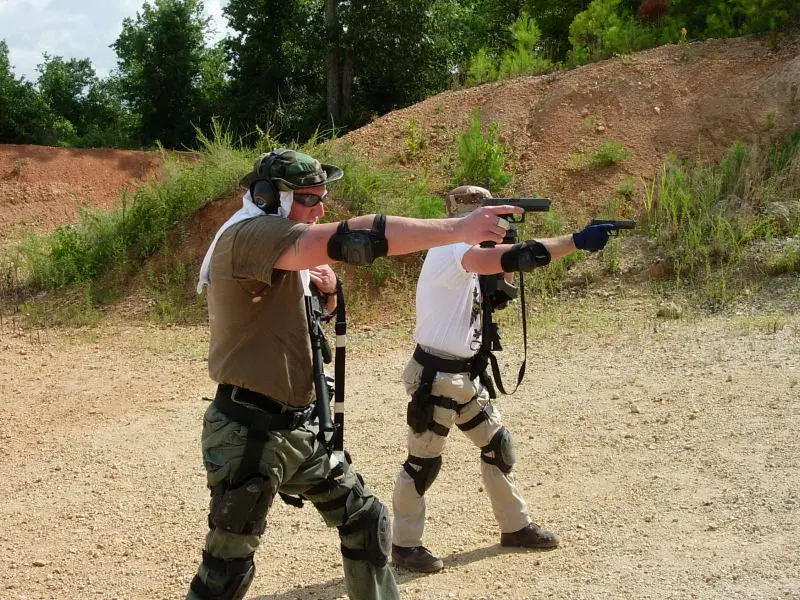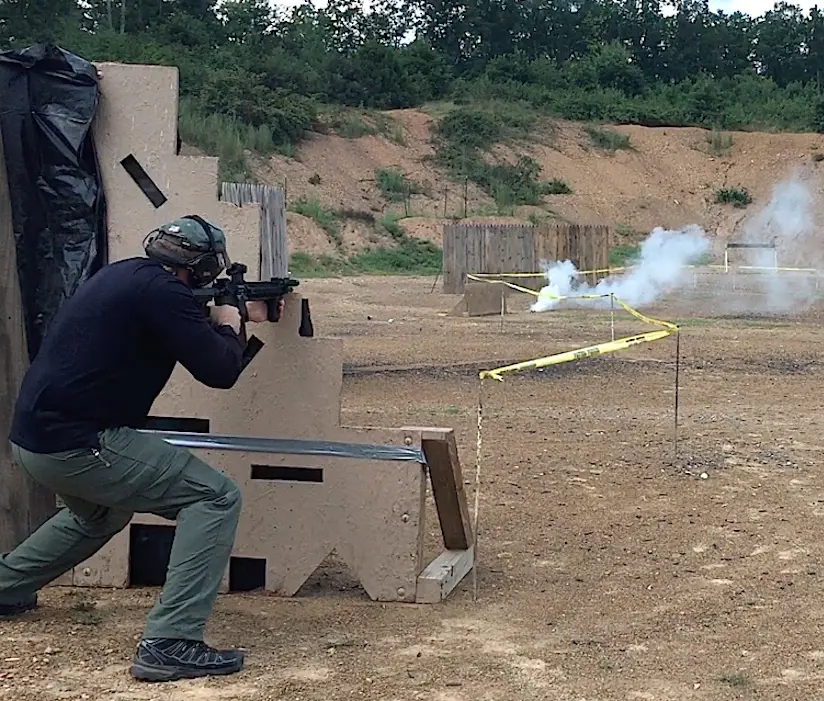THERE was a time when coke was black liquid, booty was pirate treasure, and Gaulstones were projectiles flung by Roman catapults.
But even in an era when coke has become white powder and gallstones require laser surgery as opposed to a crushed-skull battlefield burial, some things don’t change. And one of these constants has been the geometric stance and body position of the shooter when firing from standing/offhand, kneeling, military squat, sitting, and prone.
For the past couple of centuries, these positions have essentially remained the same, even though the changing face of battle has resulted in several modifications to the base systems. An example of one of these variants would be the increasingly popular frontal-facing, forward-leaning offhand stance, which allows fluid movement for advancing and withdrawing into or away from an enemy location.
An additional bonus to this technique, as opposed to the traditional angled stance, is that it places the shootist’s primary body armor between the enemy and himself, assuming a full frontal-facing assault from either of the combatants. As an aside, it also assumes you’re not using a manly man’s boomstick—such as an elephant gun—in which case you’ll wind up airborne, closely followed by employment of the African Big Game Supine technique.
The above having been stated, it remains only to clarify the thrust of this treatise: Through the eyes of a boxer, everybody else looks like a punching bag, and sometimes we tend to forget there is a potential dark cloud to every silver lining. Sometimes people counter- punch, and the corollary is that shooting positions that give satisfying results on inanimate range targets aren’t always a viable proposition under specific circumstances in a fight.
Face the ugly facts: One of the primary objectives in a ballistic swap meet is to avoid being shot. And since this isn’t always possible, the next best thing to not taking incoming is not to be shot to the point of incapacitation— or death. As Mister Eastwood opined in The Outlaw Josey Wales, “Dying ain’t much of a living, boy.”
Since this may sound obvious, or even insulting to the reader’s intelligence, allow me to extrapolate on the main point of this article. While we’re all aware that intervening hard cover will stop most incoming smallarms fire, sometimes that cover isn’t available, and you’re hung out with only non-projectile-stopping concealment, or worse, stuck out in the open like a beef burger at a New Delhi restaurant.
Your only choices then are to move or stabilize in whatever body position you feel is strategically the most viable at that stage of proceedings. And if your choice is to remain stationary, the pro and con accountancy ledger has to be mentally balanced in your favor before selecting a specific position, or you could sustain more damaging injuries than necessary.
To elucidate:
Many people are taught to automatically drop to a military braced kneeling position when in trouble, such as during a weapon malfunction clearance operation, to “make yourself a smaller target” until you’re back to operational status. Maybe it’s a good idea and maybe it isn’t.
The bottom line is that fights are fluid and constantly changing, and dropping to braced kneeling in one instance could be either the most brilliant or the stupidest thing you could have done at that moment. How you find out is after the fight: Either your new-found friends are falling over themselves to buy you a beer, or the very same people are joining the queue to urinate on your casket. Such is the fickleness of Man.
The point is, if you do your math homework on the human body, you will realize that when kneeling, you are not as small a target as you may have thought. Since all adult males measure 18 to 19 inches from neckline to belt line, it is obvious that, because of his leg length, a tall man will “shrink” proportionately more than a short man percentage-wise when going from standing to kneeling.
The bad news is that in kneeling, the taller man’s head will be level with the little guy’s chest when the latter is standing—and if you can tag the little guy who’s standing, you can tag the giant who’s kneeling. He is, in fact, circumferentially easier to hit. And if you take incoming when you’re in braced kneeling, you’re in big, big trouble. Your after-fight location is more likely to be the urinal than the bar counter.
Females have a neck-to-belt measurement approximately four inches shorter than that of a male, so they— and short males, for that matter, because of the latter’s short legs—become small targets when kneeling. Unfortunately, in their case, all that’s left sticking out above terra firma is the potential for a center punch—also not conducive to post-fight consumption of alcoholic beverages.
No, this is not a diatribe opposing the braced kneeling position. It is merely a humble cautionary caveat to the reader that you might want to send a buddy downrange with dummy guns and ask him to sequentially adopt various shooting positions at varying distances, both behind cover and out in the open. You may be shocked at what your enemy has available to him, both optically and ballistically, compared to what you currently think. There are no guarantees, but the old adage “forewarned is forearmed” certainly can’t negatively affect your future fighting chances.
Let’s face it: You can deal with gallstones. They’re just little pebbles that hurt like hell. Gaulstones will crush your skull.
